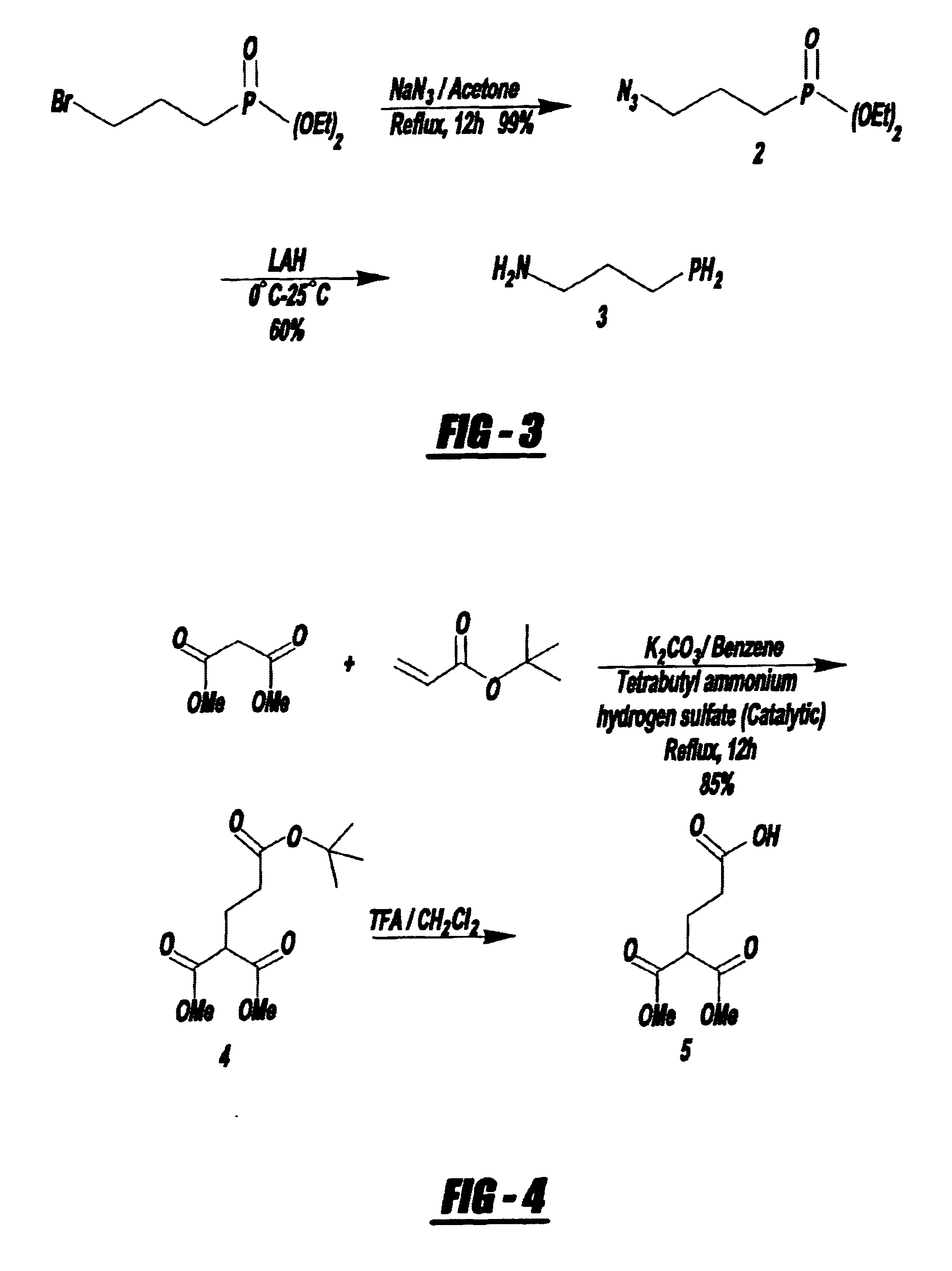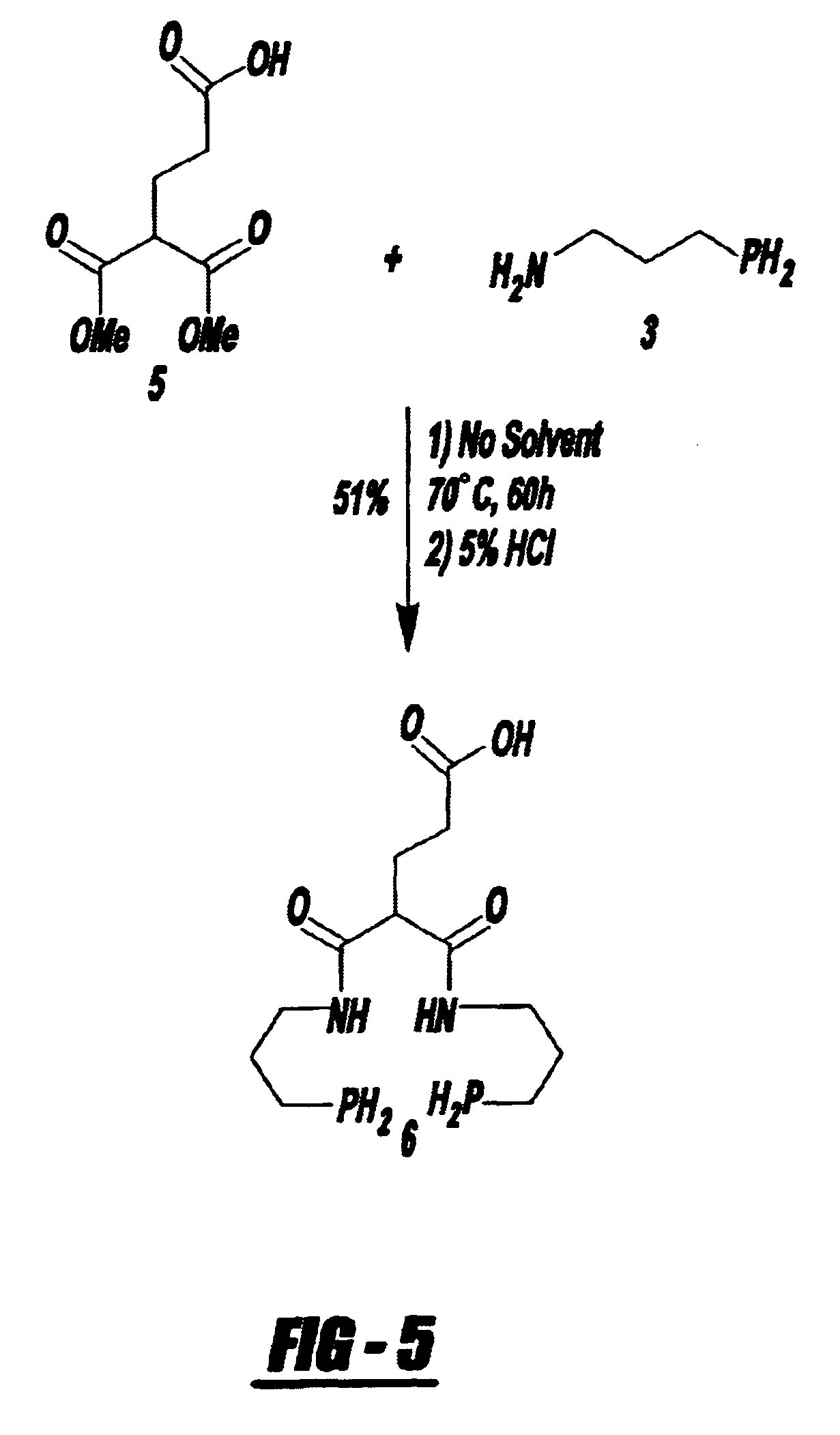Bifunctional chelating agent for the design and development of site specific radiopharmaceuticals and biomolecule conjugation strategy
a radiopharmaceutical and bifunctional technology, applied in the field of metalated biomolecules, can solve the problems of inability to use in vivo conditions aryl phosphines (e.g. dppe), and the chemical transformation of traditional phosphine ligands into bifunctional chelating agents, and achieve the effect of improving the stability and stability of aryl phosphines
- Summary
- Abstract
- Description
- Claims
- Application Information
AI Technical Summary
Problems solved by technology
Method used
Image
Examples
examples
Experimental Section
Materials. All chemicals were obtained from either Aldrich Chemical Co. or Fisher Scientific. The chemicals and solvents were of reagent grade and used without further purification. A .sup.188 W / .sup.188 Re generator was obtained from Missouri University Research Reactor and eluted using normal saline. CF-1 normal mice were purchased from Taconic Labs. ReO.sub.2 (py).sub.4 C1 was synthesized as reported in the literature. Nuclear magnetic resonance spectra were recorded on a Bruker ARX-300 spectrometer. The .sup.1 H and .sup.13 C chemical shifts are reported relative to residual solvent protons as a reference, while the .sup.31 P shifts are reported relative to an external reference of 85% H.sub.3 PO.sub.4. IR spectra were recorded on a Mattson Galaxy Series FTIR 3000 spectrometer. FAB-Mass spectral analyses were performed by the mass-spectrometry laboratories at Washington University, St. Louis, Mo.
HPLC Analysis. HPLC analyses were performed on a Waters 600E sys...
PUM
 Login to View More
Login to View More Abstract
Description
Claims
Application Information
 Login to View More
Login to View More - R&D
- Intellectual Property
- Life Sciences
- Materials
- Tech Scout
- Unparalleled Data Quality
- Higher Quality Content
- 60% Fewer Hallucinations
Browse by: Latest US Patents, China's latest patents, Technical Efficacy Thesaurus, Application Domain, Technology Topic, Popular Technical Reports.
© 2025 PatSnap. All rights reserved.Legal|Privacy policy|Modern Slavery Act Transparency Statement|Sitemap|About US| Contact US: help@patsnap.com



